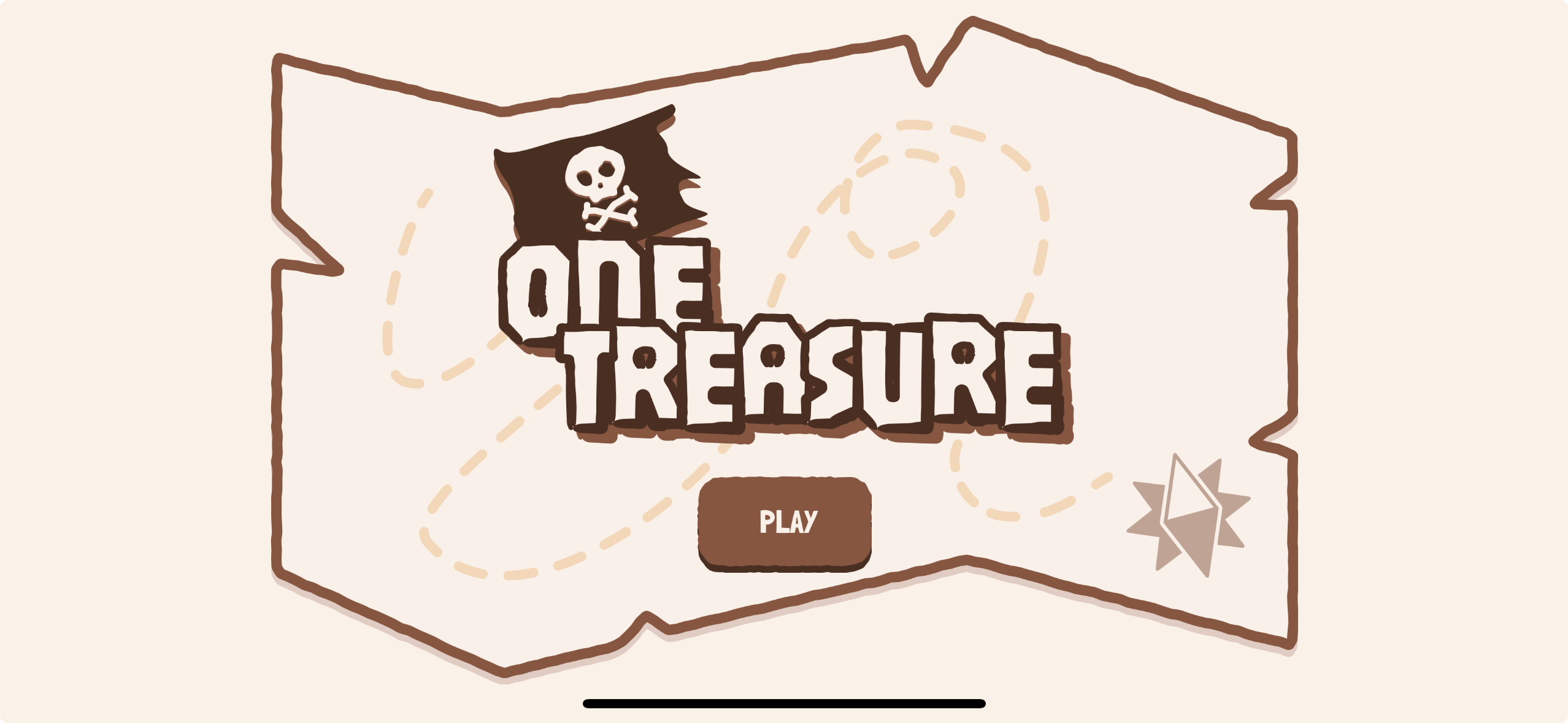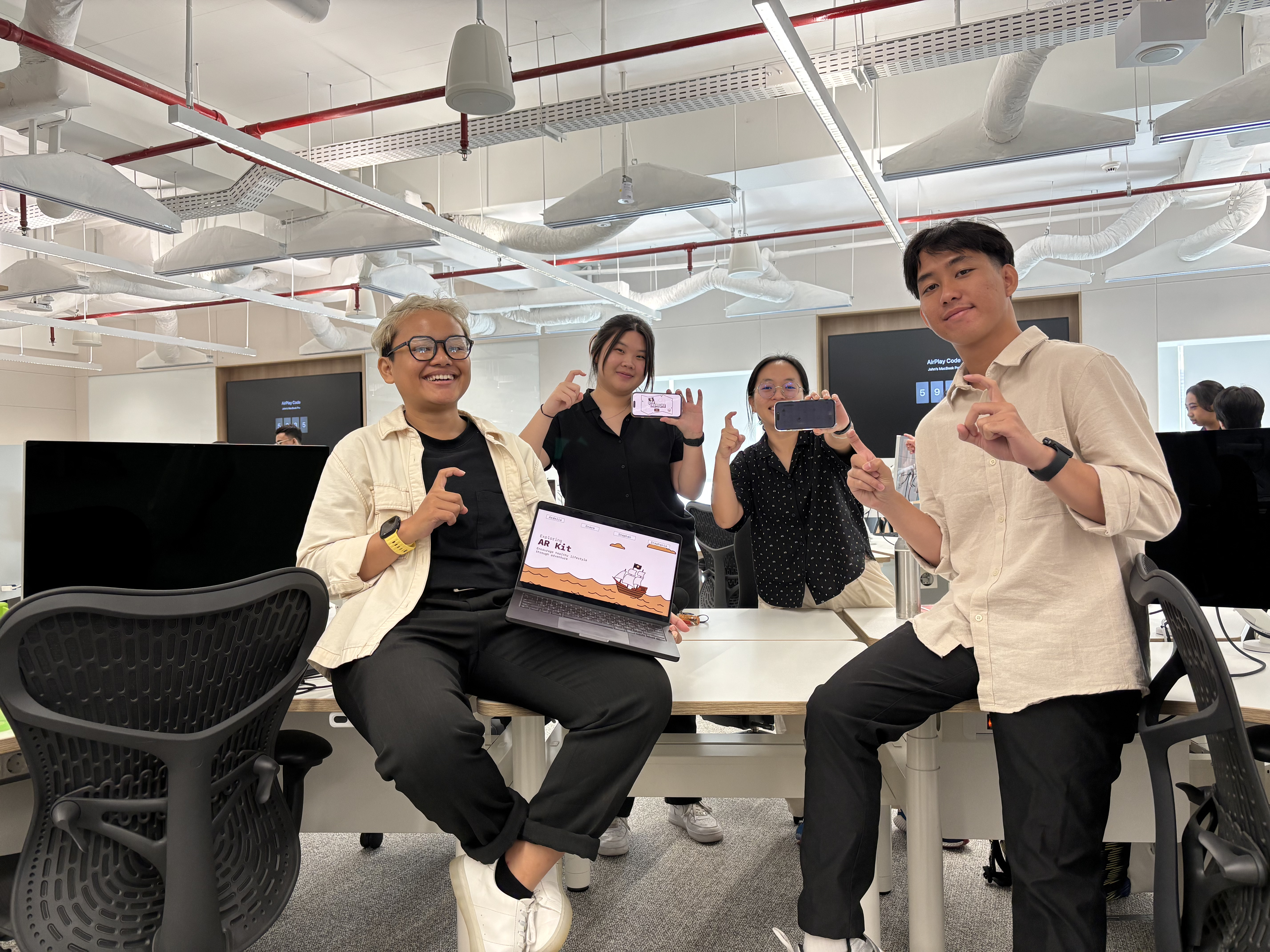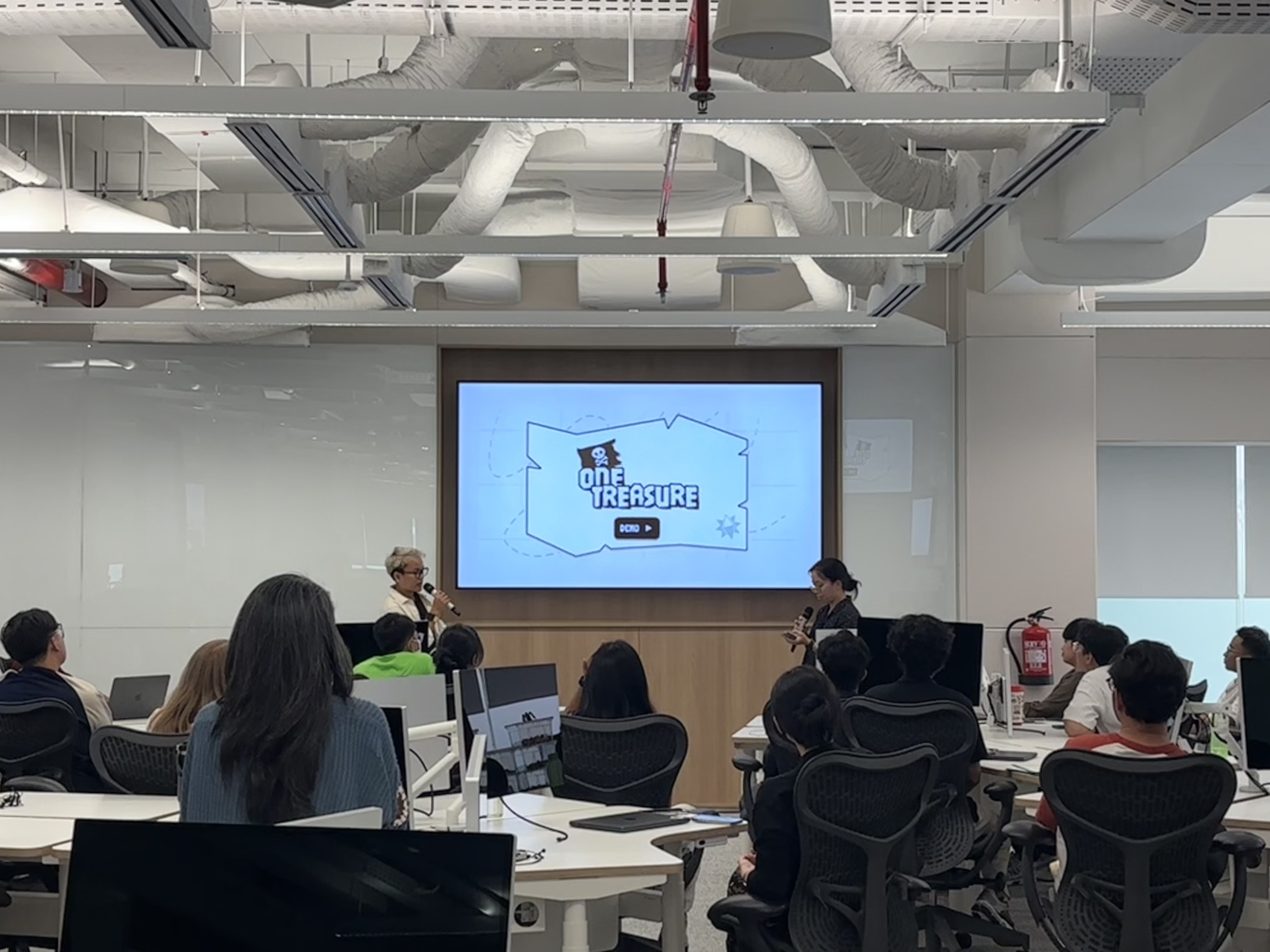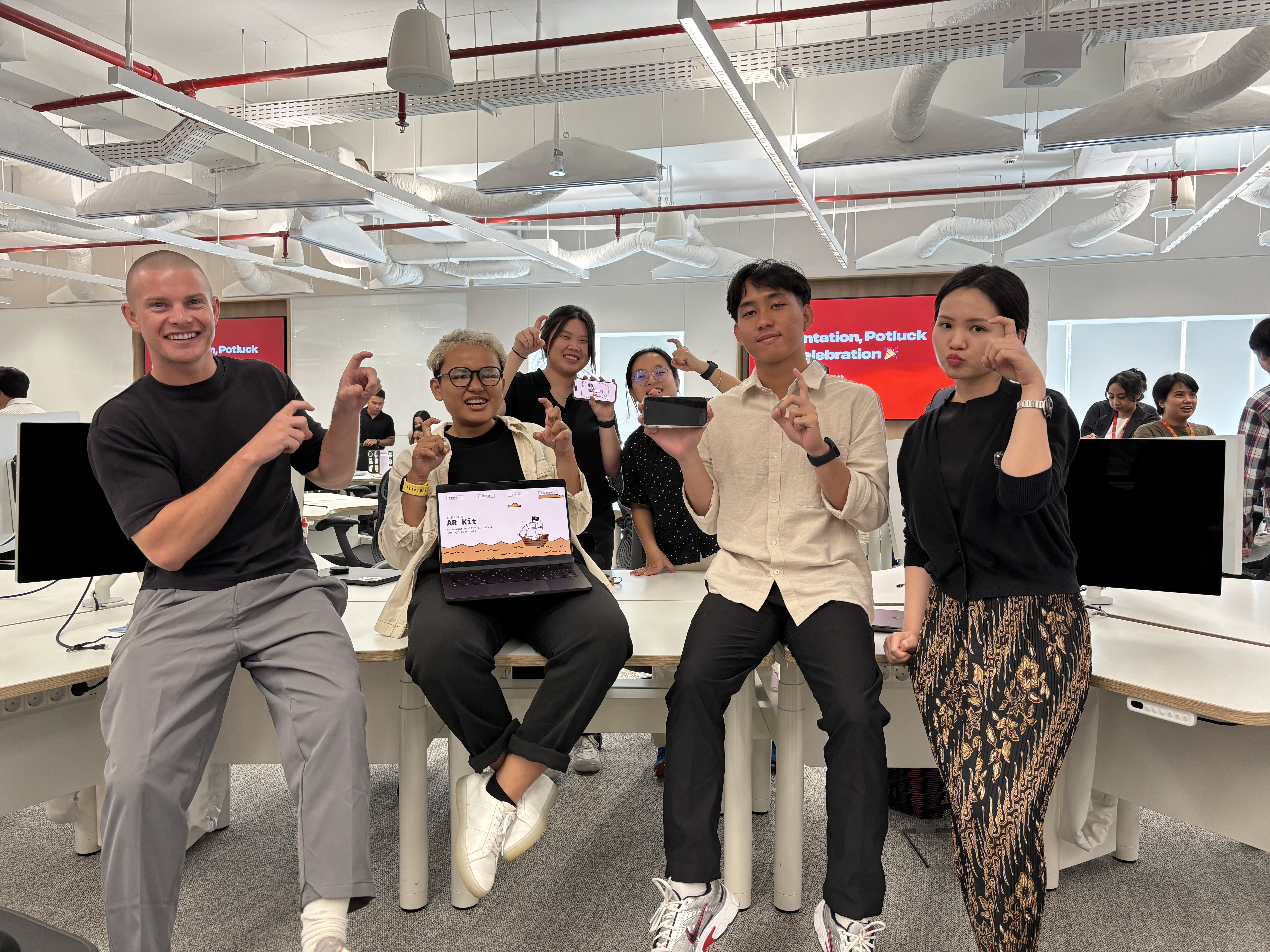
When we got the chance to explore Apple Tech at the Academy, my team and I wanted to challenge ourselves. We could have built something “serious” and impactful — but this challenge was about learning. So we thought: why not do something fun? None of us had ever built a game before, let alone an AR game. That sounded scary… but also exciting.
🌍 The Idea: A Treasure Hunt Adventure
I’m a big fan of One Piece, so naturally, our concept was inspired by pirates and hidden treasures. We imagined a story where a pirate lost their ship and had to travel across islands, solving puzzles to collect fragments and reclaim the treasure.
The gameplay was simple but ambitious:
- You’d start with a map of islands.
- Each island unlocked after you completed the previous one’s riddle.
- Using AR, you’d place an island on a horizontal surface.
- A crow’s sound guided you to the hidden chest.
- Tapping the chest revealed a riddle. Solve it → earn a fragment → unlock the next island.
It sounded fun on paper. But turning it into reality was a whole new challenge.
👥 The Team

We were a group of four — three coders (including me) and one designer. None of us had experience in AR or game development. Our designer also didn’t have much background in 3D modeling. But we all had one thing in common: the desire to learn something new.
I even got the chance to help teammates set up Git and GitHub for the first time. It was our first collaborative project, so version control was both a learning curve and a bonding experience.
🛠️ The Tech Behind It
We built the game using:
- RealityKit → to render and place our islands in AR.
- AVFoundation → to add the crow’s sound as an audio guide.
The interactivity was simple but effective:
- Tapping on the hidden object revealed the riddle view.
- The crow’s call helped guide players toward the chest.
⚔️ The Struggles
Working with AR for the first time wasn’t easy. The hardest part was positioning objects — we ended up hardcoding coordinates just to make things work. On top of that, our codebase quickly got messy. Midway through, I decided to refactor the whole project using MVVM and OOP principles. It was tough, but it made our structure cleaner and more scalable.
We also worked late nights and even weekends. Time management was a real lesson — projects always feel shorter than they are.
✨ The Wins

The coolest moment? When the gameplay finally worked. Watching the island appear on a table, hearing the crow, tapping the chest, and solving the riddle — it all came together.
Even better, when we demoed the game to mentors and other learners, we got really positive feedback. People were excited, some even asked to try it themselves. That validation felt amazing.
💭 Reflections
This project taught me so much:
- Collaboration matters → Teaching teammates Git/GitHub gave me confidence in both coding and mentoring.
- Time is limited → Planning is just as important as coding.
- Learning mindset wins → Even though none of us had game dev experience, we still pulled it off. Our designer, who had little experience with 3D assets, amazed us with what she created.
We didn’t finish the final island, and if I had more time, I’d love to add variety to the gameplay to keep it engaging. But honestly, I’m proud of what we achieved.
AR was a mystery to me before this project, but now I understand how it works and how fun it can be. More importantly, I learned that with the right team spirit, you can dive into the unknown — and build something exciting.

A big thank you to my teammates for their dedication, late nights, and willingness to explore new territory with me, and to the mentors at the Academy for their feedback and encouragement. This project was proof that learning is always better together.